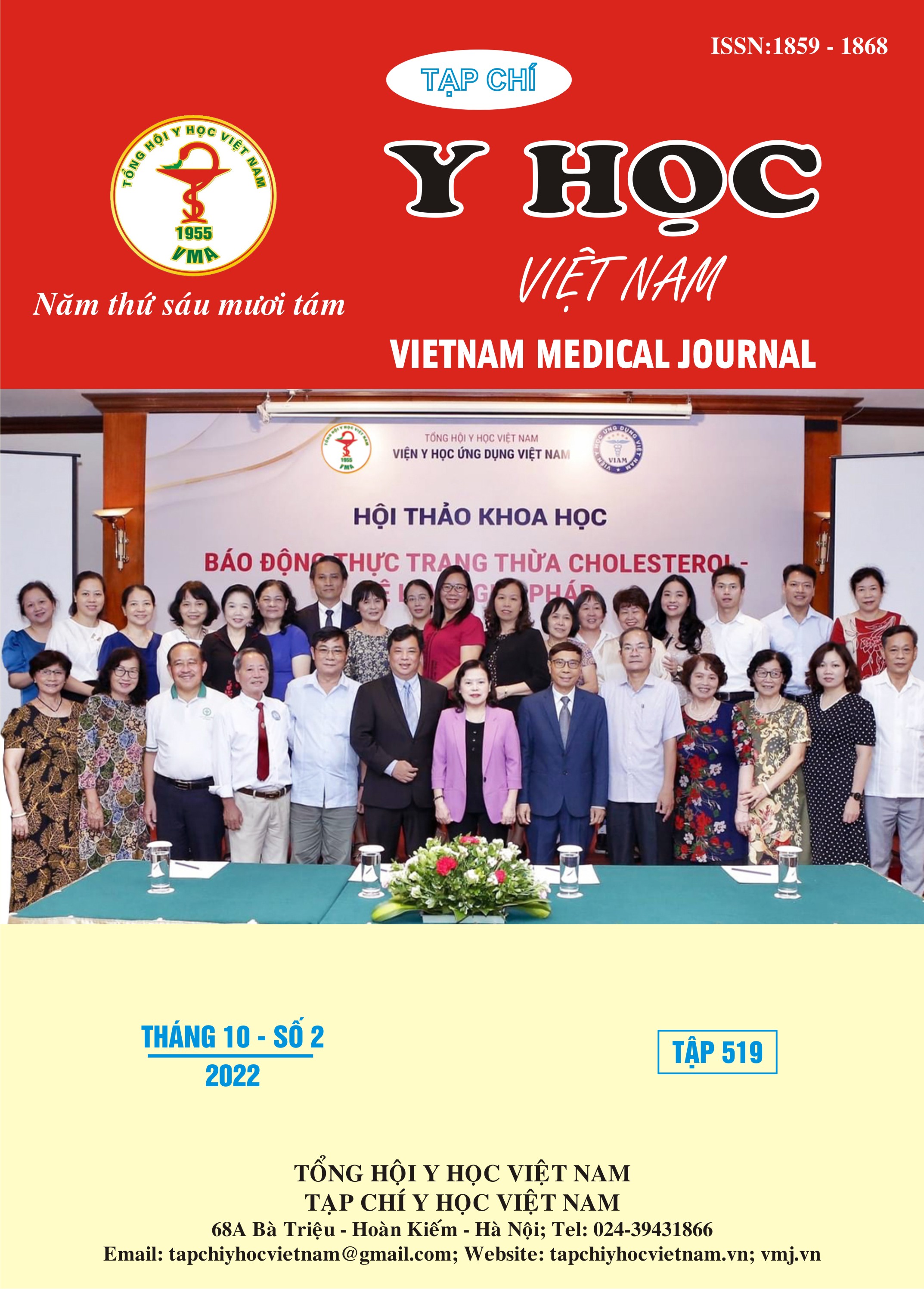CLINICAL FEATURES AND ELECTRODIAGNOSIS OF ULNAR NEUROPATHY AT THE ELBOW
Main Article Content
Abstract
Objectives: To describe clinical and Electrodiagnosis of ulnar neuropathies at the elbow at Hanoi Medical University Hospital. Subjects and methods: A cross-sectional description of 25 patients diagnosed with ulnar neuropathies at the elbow. Result: Male/Female ratio = 2/1. The mean age was 46.1 ± 15.3. The disease occurs mainly in the working age group 18-60 (72%). The most common location of lesions is in the Epicondylar groove accounting for 60%, and 40% in the Cubital Tunel. Common clinical symptoms: 100% numbness in the hand, 96% decreased sensation. Symptoms of muscle weakness and atrophy accounted for 52% and 48%. 56% weak muscles of the little finger and the first dorsal interscapula, the rate of muscle atrophy in these two muscle groups is 48%. Weakness of the ulnar carpal flexor and deep common flexor of the fingers was less common with 28%. Clinical tests: Tinel sign has a sensitivity of 68%, Wartenberg sign is 56% and elbow flexion test is 40%. The classification of clinical lesions according to McGowan is common in the moderate group, accounting for 52%. Electrophysiologic evaluation: Very mild level accounts for the highest rate with 40%. The moderate and heavy groups were 24% and 32% respectively. Simple myelin damage is 36%, axonal injury alone is 4%, and mixed axon-myelin damage accounts for 60%. Conclusion: Common clinical symptoms of ulnar neuropathies at the elbow are sensory disturbances and motor weakness of the muscles controlled by the ulnar nerve, electrophysiology plays an important role in the diagnosis, identify and evaluate the extent of clinical injury.
Article Details
Keywords
Ulnar neuropathy at elbow, Electrodiagnosis, Including nerve conduction study
References
2. An TW, Evanoff BA, Boyer MI, Osei DA. The Prevalence of Cubital Tunnel Syndrome: A Cross-Sectional Study in a U.S. Metropolitan Cohort. J Bone Joint Surg Am. 2017;99(5):408-416.
3. Practice parameter for electrodiagnostic studies in ulnar neuropathy at the elbow: summary statement American Association of Electrodiagnostic Medicine, American Academy of Neurology, American Academy of Physical Medicine and Rehabilitation. Muscle & Nerve. 1999;22(3):408-411 DOI: 410.1002/(sici)1097-4598(199903)199922:199903<199408::aid-mus199916>199903.199900.co;199902-199907.
4. Beekman R, Van Der Plas JP, Uitdehaag BM, Schellens RL, Visser LH. Clinical, electrodiagnostic, and sonographic studies in ulnar neuropathy at the elbow. Muscle & Nerve: Official Journal of the American Association of Electrodiagnostic Medicine. 2004;30(2):202-208
5. McGowan AJ. The results of transposition of the ulnar nerve for traumatic ulnar neuritis. The Journal of bone and joint surgery British volume. 1950;32(3):293-301
6. Padua L, Aprile I, Mazza O, Padua R, Pietracci E, Caliandro P, Pauri F, D'Amico P, Tonali P. Neurophysiological classification of ulnar entrapment across the elbow. Neurol Sci. 2001 Feb;22(1):11-6.
7. Raeissadat, Seyed Ahmad, et al. "Electrodiagnostic findings in 441 patients with ulnar neuropathy-a retrospective study." Orthopedic Research and Reviews 11 (2019): 191.
8. R. Lancigu, Y. Saint Cast, G. Raimbeau, F. Rabarin,Dellon's anterior submuscular transposition of the ulnar nerve: Retrospective study of 82 operated patients with 11.5 years’ follow-up,Chirurgie de la Main,Volume 34, Issue 5,2015: 234-239.
9. Stewart JD. The variable clinical manifestations of ulnar neuropathies at the elbow. J Neurol Neurosurg Psychiatry 1987;50:252–258.


